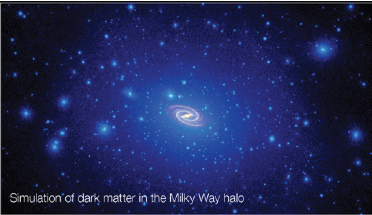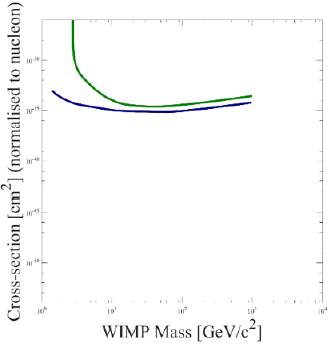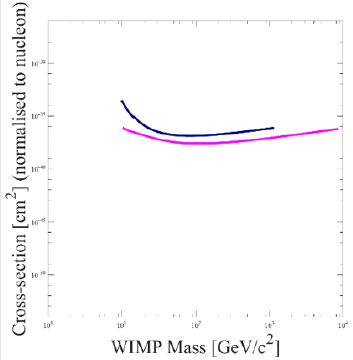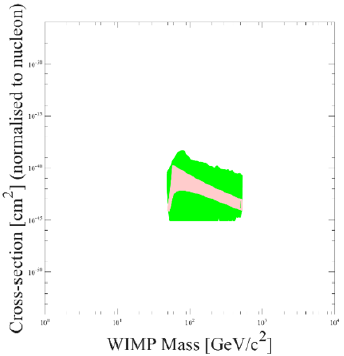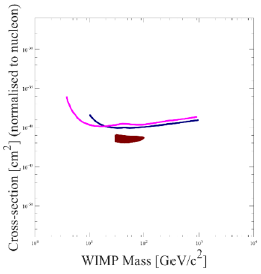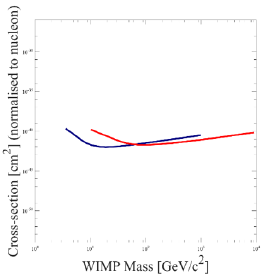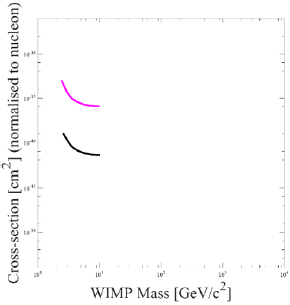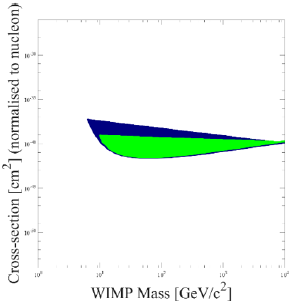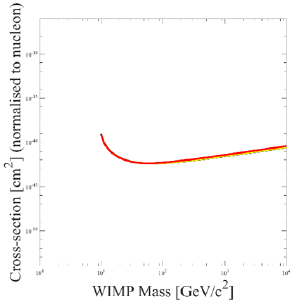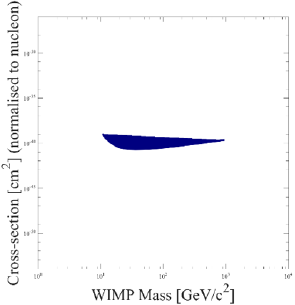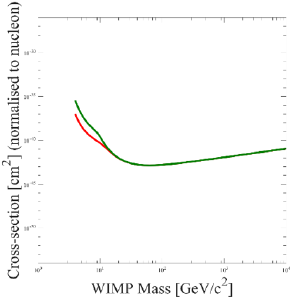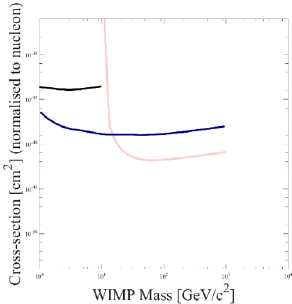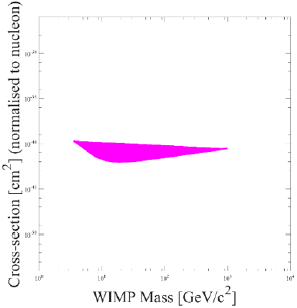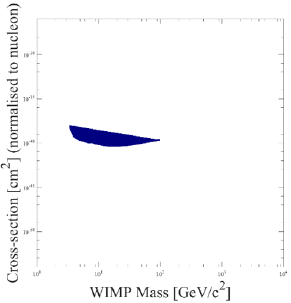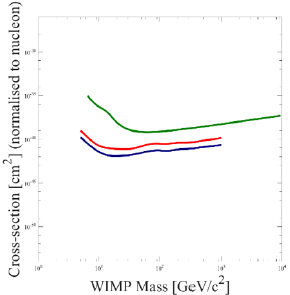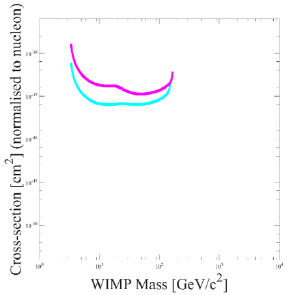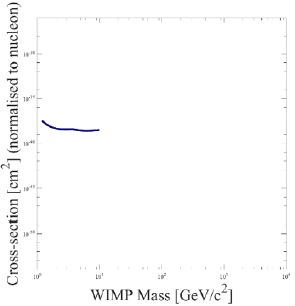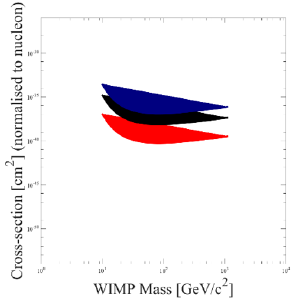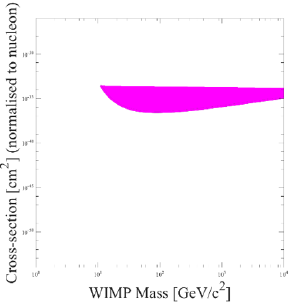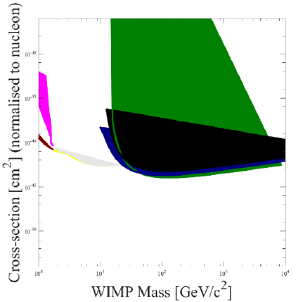
Lupine Publishers Group
Lupine Publishers
Menu
ISSN: 2641-6921
Editorial(ISSN: 2641-6921) 
Characteristics of Dark Matter Volume 1 - Issue 3
Manu Mitra*
- Department of Electrical Engineering, Alumnus of University of Bridgeport, United States
Received: May 03, 2019; Published: May 15, 2019
*Corresponding author: Manu Mitra, Department of Electrical Engineering, Alumnus of University of Bridgeport, United States
DOI: 10.32474/MAMS.2019.01.000115
Abstract
There are many theories about the Dark Matter. It is one of complex part in Astrophysics to understand its behavior, nature and its complex performance. In this research paper, various characteristics are taken to plot the graphs based on experiments, projection, and theoretical point of view; various parameters are taken into consideration such as spin-independent and spindependent. X axis is plotted with lower bound in GeV/c2. Y axis is plotted in variable cross section of 10-54cm2 and 10-26cm2 and other parameters illustrated in the table.
Keywords: Dark Matter; Characteristics; Spin-independent; Spin-dependent
Introduction
To make sense of dataset and theoretical representation for the universe; first, standard model of cosmology i.e., Cold Dark Matter that requires around 96% of the universe is composed of unknown material that cannot be directly observed. Second requirement for dark matter is more grounded in sound observation and classical physics. Around two thirds of this unknown material can’t possibly be matter, one of the reasons is that it grows as universe grows – so we call it as “dark energy”. The remaining section we call dark matter since it is capable of generating gravity. In this specific context, dark matter is raised to balance the math – within a set of formulae which are straining around 96% of the universe is invisible and undetectable. In the second theory; the way galaxies clusters and interact dynamically, it signifies that they are composed of only visible and other known matter that lie within them. Milky Way itself is rotating in a manner that would result flying apart, if there wasn’t additional invisible matter generating additional gravitational phenomenon. That is the reasons to think that there could be something else that is unknown [1].
Literature Review
If Academics and scientists cannot see dark matter, then how do they know they exists? Scientist calculate mass of large objects in space by comprehending their motion. Expert Astronomers examine spiral galaxies to view materials in the center moving faster than on the outer edges. Instead they found that stars in both locations travelled at the same velocity, demonstrating that galaxies contained more mass than could be seen. Clusters of galaxies would retrogress [2]. if the only mass they contained were visible to conventional astronomical measurements. (Figures 1-3)
Figure 2: Illustrates Dwarf galaxies with ongoing star formation. Image Reference: Nola Taylor Redd [2].
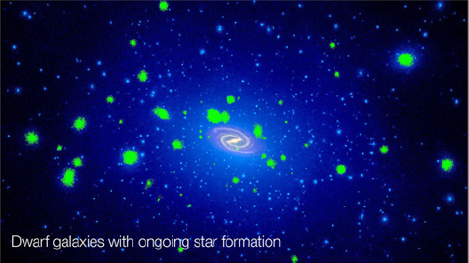
Figure 3: Illustrates simulation of Dwarf galaxies with star formation shut off by reionization. Image Reference: Nola Taylor Redd [2].
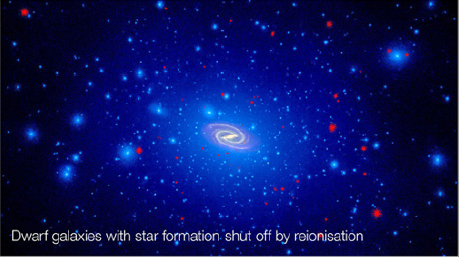
Dark Matter Simulations
a) Dark matter for spin dependent
A simulation for Dark Matter was performed for Spin dependent [3], (Figures 4-6).
b) Dark matter for spin independent
A simulation for Dark Matter was performed for Spin independent (Figures 7-9), (Table 1-20).
c) Dark Matter Simulation for CDEX-10 (Figures 10)
d) Dark Matter Simulation for CDEX-10(Figures 11)
e) Dark Matter Simulation for CDMS II (Soudan) (Figures 12)
f) Dark Matter Simulation for COSME (Figures 13)
g) Dark Matter Simulation for COUPP (Figures 14)
h) Dark Matter Simulation for CREST-I (Figures 15)
i) Dark Matter Simulation for CUORICINO (Figures 16)
j) Dark Matter Simulation for CoGeNT (Figures 17)
k) Dark Matter Simulation for Cuore (Figures 18)
l) Dark Matter Simulation for DAMA (Figures 19)
m) Dark Matter Simulation for DAMIC (Figures 20)
n) Dark Matter Simulation for DMTPC (Figures 21)
o) Dark Matter Simulation for DRIFT (Figures 22)
p) Dark Matter Simulation for Dark Side (Figures 23)
Results
What is claimed in this research article are
a. Various Plots for Dark Matter have been plotted for spin dependent, spin independent
b. Plots for CDEX-10, CDMS I (SUF), CDMS II (Soudan), COSME has been depicted
c. COUPP graph has been plotted and values has been illustrated in the table
d. CREST-I graph has been plotted and values has been illustrated in the table
e. CUORICI graph has been plotted and values has been illustrated in the table
f. CoGeNT graph has been plotted and values has been illustrated in the table
g. Cuore graph has been plotted and values has been illustrated in the table
h. DAMA graph has been plotted and values has been illustrated in the table
i. DAMIC graph has been plotted and values has been illustrated in the table
j. DMPTC graph has been plotted and values has been illustrated in the table
k. DRIFT graph has been plotted and values has been illustrated in the table
l. Dark Side graph has been plotted and values has been illustrated in the table
Conclusion
To conclude various samples from CDEX-10, CDMS I (SUF), CDMS II (Soudan), COSME, COUPP, CREST-I, CUORICI, CoGeNT, Cuore, DAMA, DAMIC, DMPTC, DRIFT, Dark Side has been illustrated with theoretical, experiment with various limits of spin dependent and spin independent.
Discussion
In this research article all the values are taken as default values which are documented in Tables. Results would vary with the change of x range (WIMP mass), y range (cross section), etc.
Acknowledgment
Author would like to thank Prof. Navarun Gupta, Prof. Hassan Bajwa, Prof. Linfeng Zhang and Prof. Hmurcik for their academic support. Author also thanks anonymous reviewers for their comments.
Conflicts of Interest
There is no conflict of interest as per Author’s point of view.
Conflicts of Interest
- (2011) Dark matter science. Physics Org.
- Redd NT (2017) What is Dark Matter?
- Desai A, Moskowitz A (2013) Tools Limit Plot generator.

Top Editors
-

Mark E Smith
Bio chemistry
University of Texas Medical Branch, USA -

Lawrence A Presley
Department of Criminal Justice
Liberty University, USA -

Thomas W Miller
Department of Psychiatry
University of Kentucky, USA -

Gjumrakch Aliev
Department of Medicine
Gally International Biomedical Research & Consulting LLC, USA -

Christopher Bryant
Department of Urbanisation and Agricultural
Montreal university, USA -

Robert William Frare
Oral & Maxillofacial Pathology
New York University, USA -

Rudolph Modesto Navari
Gastroenterology and Hepatology
University of Alabama, UK -

Andrew Hague
Department of Medicine
Universities of Bradford, UK -

George Gregory Buttigieg
Maltese College of Obstetrics and Gynaecology, Europe -

Chen-Hsiung Yeh
Oncology
Circulogene Theranostics, England -
.png)
Emilio Bucio-Carrillo
Radiation Chemistry
National University of Mexico, USA -
.jpg)
Casey J Grenier
Analytical Chemistry
Wentworth Institute of Technology, USA -
Hany Atalah
Minimally Invasive Surgery
Mercer University school of Medicine, USA -

Abu-Hussein Muhamad
Pediatric Dentistry
University of Athens , Greece

The annual scholar awards from Lupine Publishers honor a selected number Read More...




